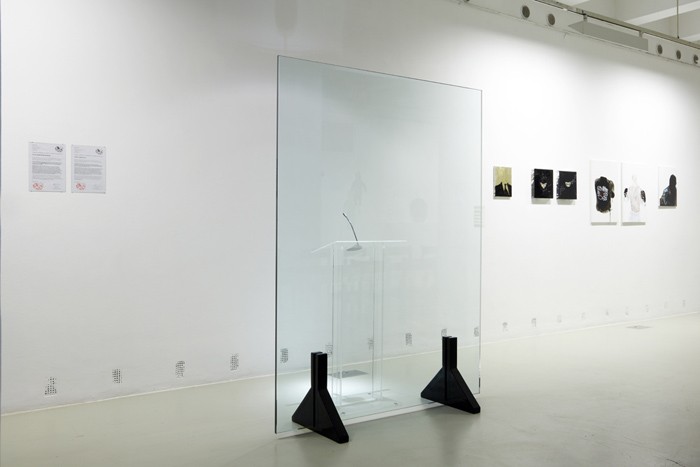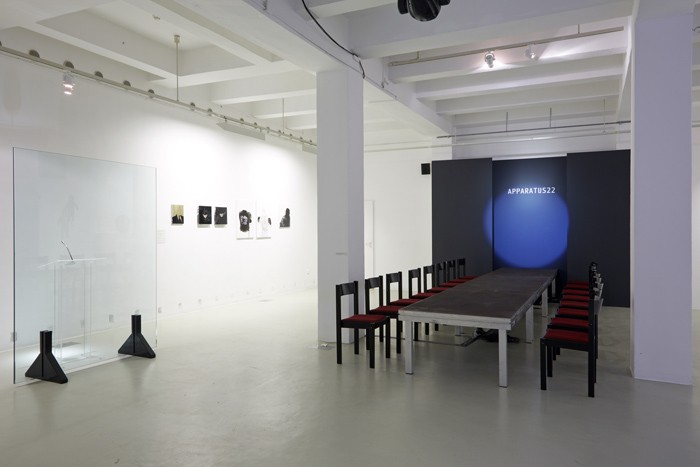Not bullet-proof safety cabine for politicians with good conscience | installation
folied glass, powder painted, acid-proof steel construction, plexi pulpit, microphone and tripod | 60x1500x2000 mm | Collection of the Institute of Contemporary Art, Dunaújváros
The artwork was made for the exhibition with the same title, held in Trafó Gallery in Budapest 2013, and in Karlin Studios in Prague, Czeh Republic in 2014. The exhibitions were curated by Borbála Szalai.

Installation view
2013 | "The Emperor's New Apparel" | Trafó House of Contemporary Arts, Budapest | photo by Miklós SURÁNYI
With certificates on the wall.

Installation view
2013 | "The Emperor's New Apparel" | Trafó House of Contemporary Arts, Budapest | photo by Miklós SURÁNYI
Paintings in the background: a selection from the series called Mask, by BL

Exhibition view
5 SEP - 20 OCT, 2013 | "The Emperor's New Apparel" | Trafó House of Contemporary Arts, Budapest | photo by Miklós SURÁNYI
Exhibiting artists: Apparatus 22 (RO)- Lőrinc Borsos (HU) – János Fodor (HU) - Jaroslav Kyša (SK) – Péter Szalay (HU) - Karol Radziszewski (PL) | Curator: Borbála Szalai
Just like Andersen’s tale, The Emperor’s New Clothes, this exhibition – home to imaginary outfits, pretended fashion collections and fake fashion shows – regards clothes as a kind of symbolic layer used to provide a new vantage point on social issues, politics and the criticism levelled against it.
In Andersen’s tale, the tailor’s fashioning the emperor’s new clothes display a peculiar critical approach and the works of the young artists displayed at this exhibition are all linked to this invisible, yet deeply revealing attitude, which seek the answer to questions such as: Are there any current trends in the field of protesting or activism? How does history or a national symbol appear as a kind of fetish? What kind of fashion elements or accessories are tied to power? What ethical and moral contents are linked to the world of fashion and the work force market producing these fashion items? What kind of possible shared points can be found between fashion, politics and various social-gender roles?